Choosing glue for non-woven wallpaper
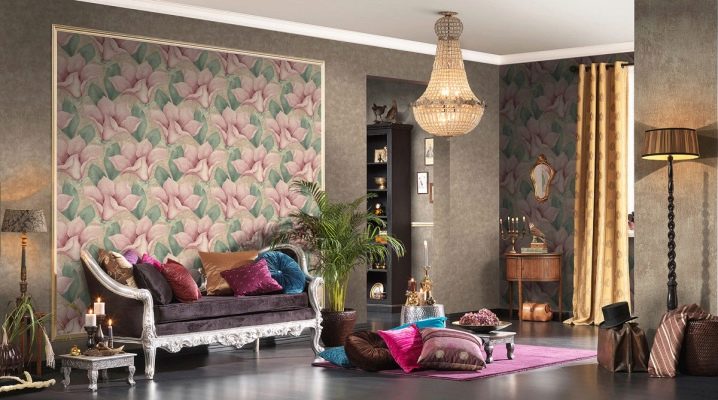
Many who made repairs on their own know that for a certain wallpaper covering, you need to choose a special glue that is suitable for this material. In addition, you need to know some of the features of applying the adhesive mixture, for example, directly on the wall or only on the wallpaper. For most people, pasting a room turns into torment, in which a lot of energy and nerves is wasted. So that your work is not in vain and the result is enjoyable, we will understand in more detail the choice of glue and the correctness of its use during repair work with non-woven wallpaper.
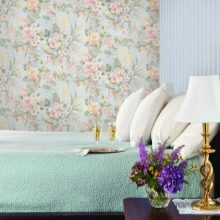
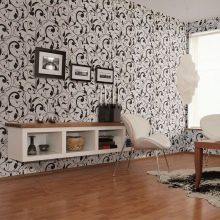

Coating features
At the moment, non-woven wallpaper is one of the most popular means of decorating walls. This is primarily due to the fact that they are much stronger in structure than many of their brethren. The composition of this type of coating includes textile and fabric fibers, which are bonded to each other, and then pressed with a special chemical composition, which gives special strength to the material. On the market you can find several types of non-woven wallpaper:
- 100% non-woven;
- non-woven base;
- non-woven wallpaper for painting.
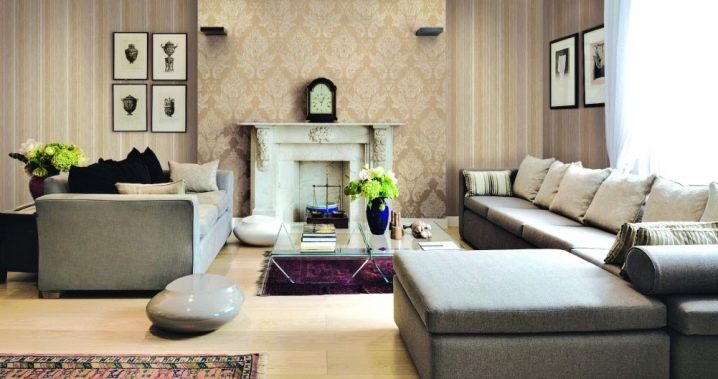
Each of these types has certain characteristics, so the final choice is always behind the buyer, based on his basic needs. So, completely non-woven wallpaper has a very dense texture, therefore, glue must be applied to both their surface and walls. Also, this stuff does not lose its appearance even under constant exposure to direct sunlight, does not get wet or shrink.
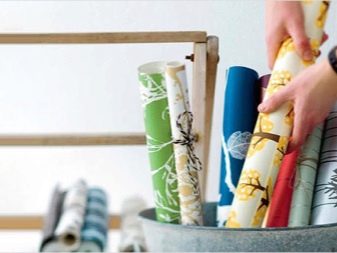
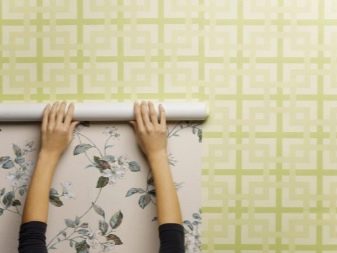
In wallpaper on a non-woven base, as a rule, the top layer, namely, the spraying (or the pattern itself) can be of any material: paper, textile, vinyl, and so on. Of course, this type of coating makes it possible to obtain multifaceted textures and various effects on the wallpaper. But the choice of these wallpapers should be approached thoroughly, since the better the material used in production, the more wear-resistant the coating will eventually turn out to be. Most of the glue for this type of wallpaper is applied directly to the wall, which greatly simplifies the repair work.
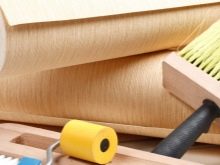
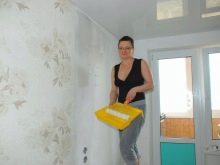

Non-woven wallpaper for painting is also very popular, since they allow you to repaint walls up to ten times without changing the coating. This is a huge plus, since you can change the color you are tired of without much effort. In addition, such wallpaper has a dense texture and allows you to close existing damage to the walls, and also such a coating has additional sound and heat insulation, resistance to sunlight.
Adhesive with this material can be applied to both the flooring and the wall to ensure maximum adhesion of the wallpaper to the surface.
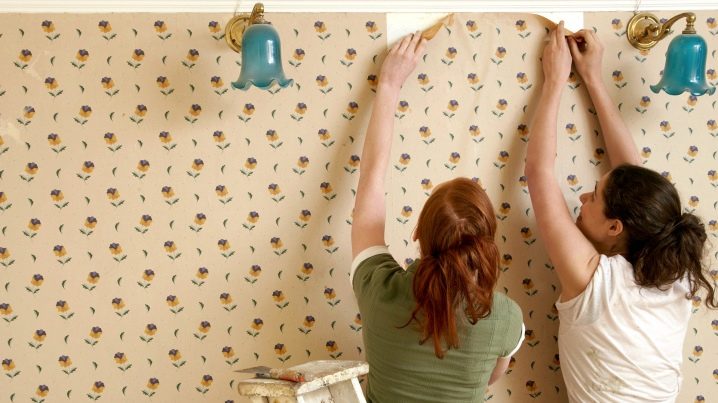
Besides excellent density and wear resistance, please note that Non-woven wallpaper has such characteristics as:
- excellent fire resistance, especially for completely non-woven materials;
- good air circulation due to the pressed structure;
- do not accumulate dust, therefore they are great for people suffering from asthma or allergies. But this characteristic applies only to non-embossed coatings!
- most wallpaper materials are moisture resistant;
- do not fade in the sun and retain their original appearance for a long time;
- easy dismantling process.
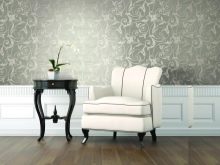


But some disadvantages of this coating should also be highlighted:
- the relief structure is easily damaged and can accumulate dust, which requires additional cleaning;
- when purchasing material for painting, you need to spend money on the purchase of the paint itself;
- one of the disadvantages of such wallpaper is the price, it is higher than paper and vinyl counterparts, but the quality and additional advantages of non-woven fabric undoubtedly win.
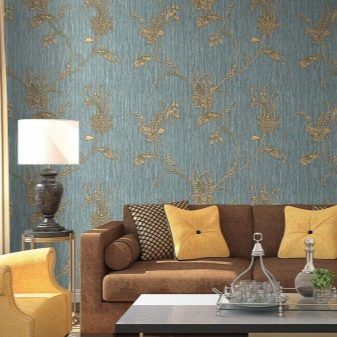
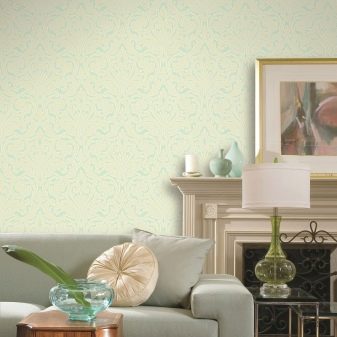
Views
When you have decided on the choice of non-woven coating, you need to choose the right glue, since the final result of pasting the room directly depends on its quality. To date, there are a lot of manufacturers that produce adhesive mixtures. Of course, for the buyer, the main criteria are:
- quality products;
- quick preparation and application;
- fast drying without traces.
But in addition to these criteria, it is also necessary to pay attention to the composition of the glue, which includes substances that can ensure reliable adhesion of the wallpaper to the wall (PVA glue and glue base), as well as special additives that are resistant to the formation and spread of fungus and mold (fungicide and bactericide ).
Such a product is high-tech and is produced only by large enterprises that have modern materials for high-quality production.
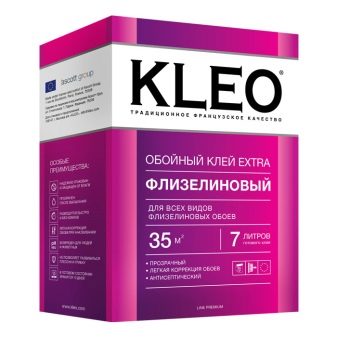
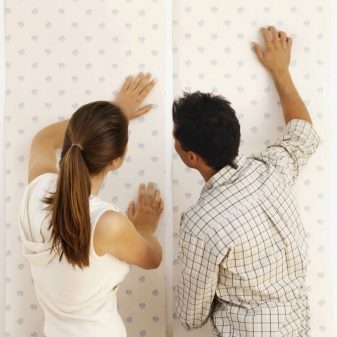
Among the main types of adhesive base for wallpaper are:
- special - they must be chosen based on the types of wallpaper: paper, non-woven, vinyl, fiberglass, cork, and so on;
- universal - special substances are added to them that enhance the binding factors of the glue. They are used for various types of coatings.
If you still choose among these types, it is better to give preference to special ones, since the manufacturer produces glue for a certain type of wallpaper and you can be sure of the final result, while universal adhesives can still let you down in repair work, and you will have to spend money again for the purchase of a higher quality adhesive base.
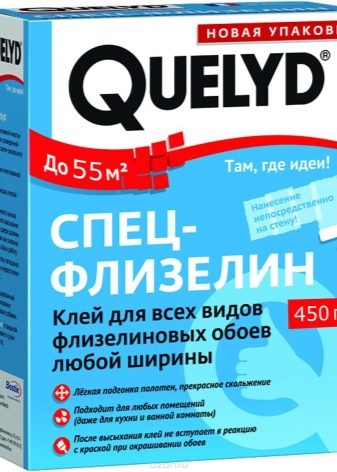
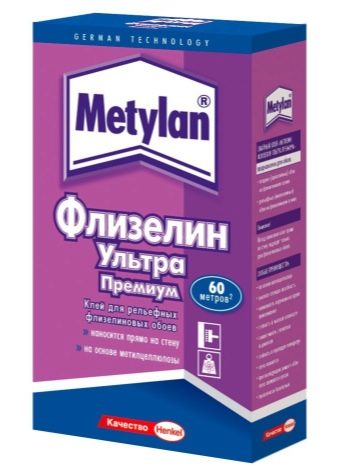
What are the main selection criteria?
One of the main criteria for choosing an adhesive is its adhesion, that is, the strength of adhesion and the ability to bond with other materials. As a rule, manufacturers do not indicate this indicator on the packaging. Therefore, in order to determine the increased adhesiveness, you need to pay attention to the presence of PVA in the composition. Only this component is able to enhance the adhesion of the wallpaper to the wall.
In addition, it is worth choosing adhesives from well-known brands that are especially popular among most buyers. It should be noted that some brands have a developing indicator, as a rule, pink or blue (after drying it becomes colorless). With the help of it, you can easily see the areas on which no glue is applied, and thereby prevent the wallpaper from lagging behind the wall in the future. This indicator is ideal for beginners in wallpapering, as it will greatly facilitate their work.
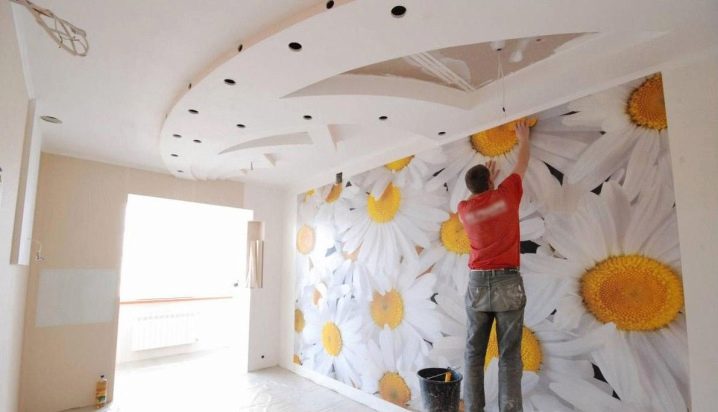
Also, when choosing, it is necessary to be guided by the level of glue consumption (this information is always available on the packaging). The manufacturer indicates the size of the area for which one pack of glue is enough, as well as what consistency it should be when diluted and how quickly it dries. Often, when gluing non-woven wallpaper, it is enough to apply an adhesive coating only on the wall. Since the material itself is heavy, it is easier to stick it onto an already prepared surface.
But sometimes manufacturers indicate in the instructions that, for reliability, you can additionally grease the edges of the canvases before applying in order to ensure maximum adhesion of the joints to the wall.
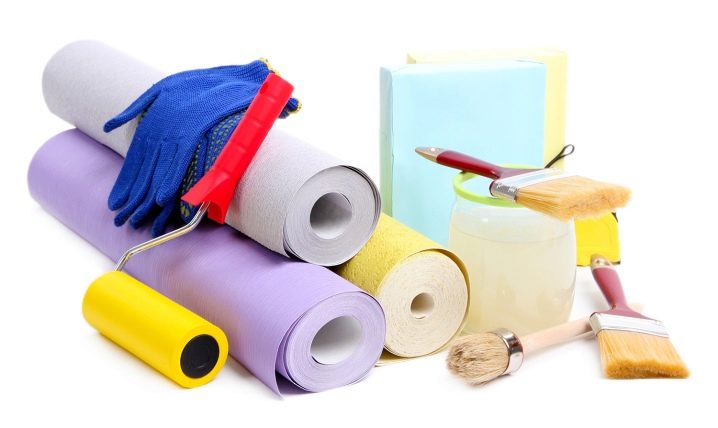
Correct application
In order for you to get a homogeneous solution without lumps, you must follow the instructions indicated by the manufacturer on the package. The adhesive must be diluted in a clean, sufficiently deep container. A household bucket or saucepan is fine for this.Please note that the water should be slightly warm (not cold or hot).
Before adding the dry mixture, you must stir the water so that so that a funnel forms in the center. And only then you need to gradually add the powder, stirring constantly, so that lumps do not form. If, nevertheless, lumps cannot be avoided, strain the mixture through a sieve. The finished glue must be left for 10-20 minutes for the mixture to swell and acquire the necessary properties for high-quality work.
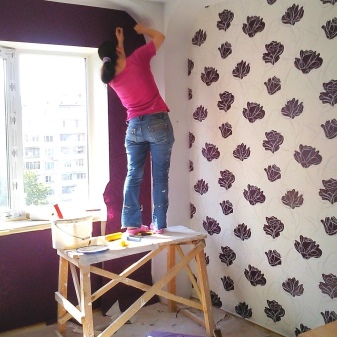
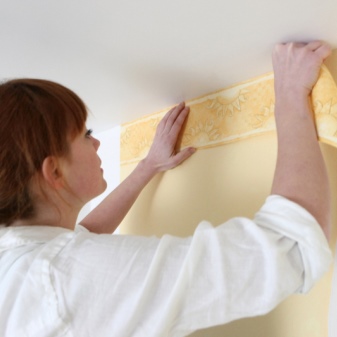
The glue mass must be sufficiently dense. The density directly depends on the wallpaper covering - the heavier it is, the thicker the adhesive material should be. Do not use highly diluted glue for non-woven wallpaper, since such a coating will not be able to hold heavy material on the wall. The glue mixture can be applied to the wall with a roller, thick brush or brush. If a thicker layer is applied, it will simultaneously serve as a surface primer.
It is better to use ready-made glue immediately., but if for some reason this is not possible, then close the container with the mixture with a lid or tie it with polyethylene. In this case, dust, random debris, etc. will not get into the mass. You can store the diluted glue from seven to ten days, after which it will simply lose its properties.
You can easily understand this - the glue mass becomes liquid, like water, and unsuitable for further use.
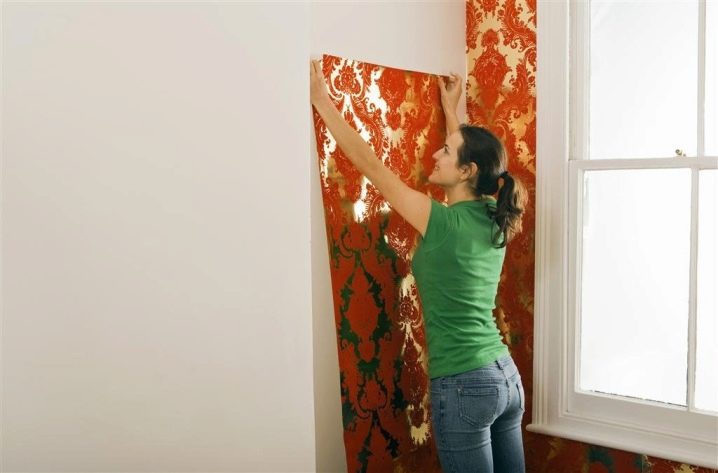
Popular manufacturers and reviews
We present to your attention the most popular and best types of glue for non-woven wallpaper from various manufacturers.
Quelyd "Special non-woven" - one of the highest quality and most popular adhesives for non-woven wallpaper. It is applied directly to the wall, has a high adhesive power. Due to its ability to slide, it provides the wallpaper material with easy gluing joint to joint. The mass contains bactericidal and antifungal additives. It should also be noted that the manufacturer Quelyd always uses materials that are safe for humans and the environment. Therefore, you can safely buy it without fear for the health of your loved ones.
Most buyers state with confidence that this glue is easy to use. In addition, a significant advantage of this material is its economy (one pack is enough for more than four standard rolls), which will significantly affect your budget.
Also, consumers declare that the finished mixture is odorless and does not leave marks on the wallpaper when used.

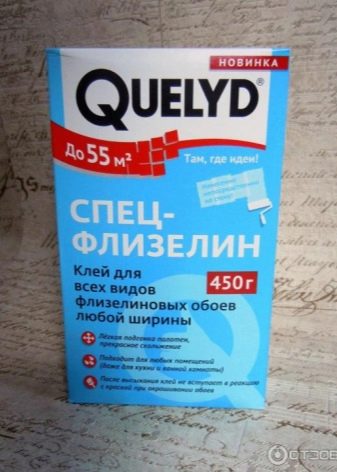
Metylan "Non-woven" - another of the popular materials for pasting a room. It is applied directly to the wall, has high adhesive qualities, is compatible with lime and cement. Separately, it should be noted that the glue is resistant to temperature extremes and has antifungal protection. The German manufacturer Methylane guarantees the safety and environmental friendliness of the material.
Among the disadvantages, many consumers note the inefficiency of the glue - one pack is enough for about 3 standard rolls. Also, the finished solution has a mild soapy smell. But the tool did an excellent job with the main functions: it is convenient to work with glue on various surfaces, so most buyers are happy with their choice.

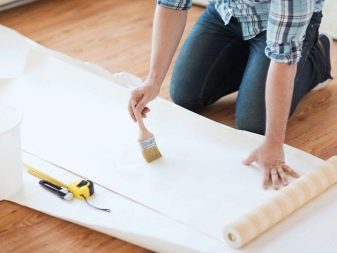
"Moment Non-woven" - high quality adhesive with excellent adhesive properties. The composition contains special anti-fungal additives. The mixture is easily applied directly to the wall with the possibility of adjusting the joints of the sheets during gluing. The manufacturer guarantees the safety and environmental friendliness of the material.
Buyers especially note the cost-effectiveness of this material (enough for 5-6 standard rolls), lack of smell and excellent adhesive properties. It shows its qualities well on almost any surface, and no stains remain on the wallpaper when pasting a room.
In addition, it is one of the cheapest materials today, which is due to Russian production.Pasting wallpaper with it is simplified at times.

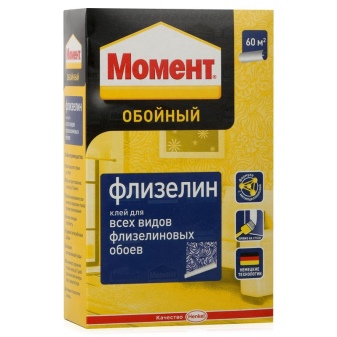
Among other brands popular with buyers, it is also worth noting:
- Kleo "Extra" - excellent glue with antifungal additives, environmentally friendly, non-toxic. It deserves a separate plus because it practically does not form lumps during the cooking process. The mixture is easy to apply, does not leave marks on the canvases. Among the disadvantages, buyers note the overpriced and the need for additional gluing of the joints of the canvases. But for the most part, consumers note that the glue copes with all the properties declared by manufacturers. In addition, it is economical and dries quickly.
- Pufas "Vlies" - a good product with excellent adhesive properties. Separately, it should be noted that this glue has a blue indicator to control the application of the mixture. Has a high moisture resistance, dries quickly and leaves no residue. Consumers note that the finished mixture has a slight odor. Among the minuses, the overpriced and uneconomical use are also noted (enough for about 3 standard rolls). In principle, buyers indicate that the glue copes with all the declared functions, but with the same characteristics, you can find a cheaper product.
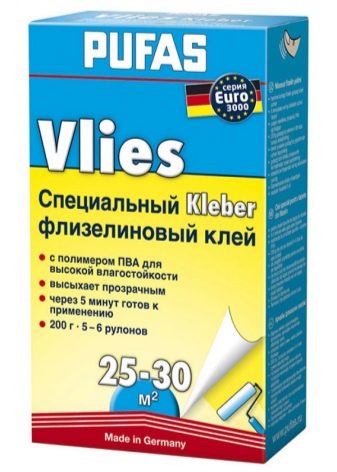
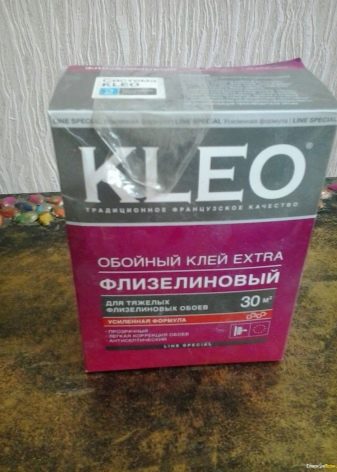
Summing up, we can say that the choice of material for repair work depends only on you and your needs. In any case, you need to choose a glue specially designed for non-woven wallpaper so that you do not have to redo your work in the future. And also be sure to follow all the manufacturer's recommendations indicated on the packaging, then the end result will definitely not disappoint you.
You will learn more about how to choose an adhesive for non-woven wallpaper in the following video.













The comment was sent successfully.